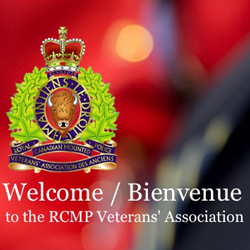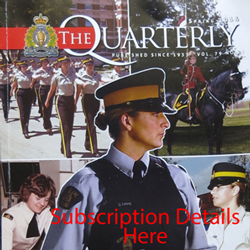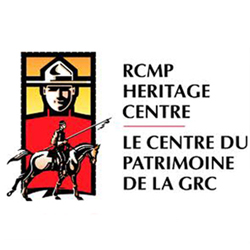Larry Burden’s This Day In The RCMP

The achievements and contributions of the Force have been built upon the individual contributions of many past Veterans. These contributions have largely been forgotten.
Veteran Sgt. Larry Burden (#35982), who served in “E” Division for 20 years, has spent many years researching and summarizing these achievements by specific date. Nearly every day, Larry sends out an email message with a selection from his work in progress manuscript “This Day In The RCMP” to individuals interested in these historical notes.
In an effort to share his research to a large group, Larry has agreed to permit us to develop a webpage on our website. Each webpage will post Larry’s historical notations over the past week.
If you wish to contact Larry Burden or provide additional information about his research, please email him at larryburden8@gmail.com.
July 16
1895 -During a severe thunderstorm at Battleford NWT, lightning struck the Quartermaster stores, and traveled into a canteen killing a dog lying at the feet of #1943 Frederick Currier. It then traveled into #2606 George McPhail’s room tearing a blanket and partially melting the barrel of his carbine rifle.
1924 -The Province of Saskatchewan repeals the prohibition of liquor, which had existed since 1916 and institutes government control of liquor sales.
1950 – Honour Roll Number 107.
#14757 Cst. Herschel Taylor Wood died of injuries received in a police car accident near Glacier Park, Montana, U.S.A., while on duty.
On July 15th 1950, Constables Herschel Taylor Wood and #13591 William A. Shaw were returning to their detachment in Cardston Alberta from an investigation that had taken them to Montana. Constable Shaw had done most of the driving during the thirteen-hour trip and they had stopped in Glacier Park to change drivers. Wood took over driving while Shaw went to sleep as they proceeded through the fog. For an undetermined reason their car went over an embankment eighteen miles south of Cardston and plunged into a narrow creek bed and crashed into a concrete abutment. Both officers were severely injured and Wood was transported by ambulance to the Colonel Belcher Hospital in Calgary, 150 miles away, where he died the next day.
Constable Herschel Taylor Wood was a third generation member of the Force and the son of Stuart Taylor Wood, the serving Commissioner of the RCMP at that time. He had a rich family heritage that entwined both RCMP and American history.
His brother John Taylor Wood, was also a member of the Force who retired in 1988 with the rank of Superintendent. Their grandfather, Zachary Taylor Wood, served in the NWMP and the RNWMP from 1885 to 1915 and rose to the rank of Acting Commissioner of the RCMP.
Zachary Taylor Wood’s father was the famous Confederate Naval Commander, Captain John Taylor Wood who after the American Civil War, settled in and is buried at Halifax Nova Scotia. He was the nephew of the Confederate President, Jefferson Davies and the great-grandson of the twelfth President of the United States Zachary Taylor.
Constable Wood was interred with full military honours at the RCMP Cemetery in Regina. In a funeral ceremony befitting his ancestry his flag-draped coffin was borne from the RCMP Chapel on a gun carriage drawn by two teams of horses. Followed by a riderless horse with boots reversed in the stirrups, and a funeral cortege that included a thirty-six-piece RCMP band, a firing party, and a ninety member marching squad.
July 15
1931 – Even though the sacred sun dance was declared illegal by the Canadian Government. Chief Buffalo Bow of the Fire Hills Reserve near Regina Saskatchewan spent two days performing the sacred dance in an attempt to bring an end to drought conditions plaguing the area. Afterwards it rained for two solid days.
1941 – RCMP Honour Roll # 102
#S/4218 Henry Clare Jarvis drowned near Lock 25, Cornwall – Williamsburg Canal, at Iroquois, Ontario. Having served in the military during WWI Henry Jarvis was too old to reenlist during WWII. He was desirous to serve his country again, so at the age of 51 Henry Jarvis joined the RCMP as Special Constable on the 19th of July 1940 and was posted as a guardsman at the Cornwall Canal on the St. Lawrence River. During his shift on this day he accidently slipped and fell into a lock and drowned.
Little is known of #S/4218 Henry Clare Jarvis and oddly his death was not recorded in the RCMP annual report for the year ending March 31, 1942. He was buried in the Old St. James Anglican cemetery in Morrisburg, Ontario. He does not have an RCMP marker on his gravesite, but is listed on a marker with two other family members.
1955 – The RCMP uses radar for traffic enforcement for the first time in Canada.
Burnaby BC Constables #16520 Edmund Clark and #16069 William Stacey operated the radar in the police car while #17856 Constable William Hulgaard pulled cars over. One of the speeding tickets was appealed before County Court Judge Sullivan who allowed the appeal on the grounds that the police were not properly trained in the use of radar. His decision resulted in the creation of one-week radar courses for the police and the requirement that certificates be issued.
1973 – While on routine patrol near Valemount, BC detachment commander #22051 Corporal Robert Ralph “Bob” Bouck came upon a collision between two tandem trucks that were in the ditch and one of the vehicles was on fire.
He was advised by the injured driver of one of the trucks that two people were trapped inside the burning vehicle. Corporal Bouck managed to remove the unconscious driver through the broken windshield and instructed the other driver and a passerby to remove the unconscious man from the area in case the truck exploded. With flames burning inside the cab of the truck, he climbed inside the cab and freed the second unconscious victim who was wedged beneath the dash and then pulled him out through the broken windshield.
Had it not been for the courage of Corporal Bouck both men would have perished in the flames. To show their appreciation for his heroism the citizens of the Town of Valemount presented him with an inscribed mantle clock at a ceremony on January 26th 1974. Other than the clock from the community, he never received any formal recognition from the RCMP.
1979 – Constables #28987 Eric Brian Thorne, MB and #30551 Allen Robert Hopper, MB responded to an industrial accident complaint at Hudson Bay, Saskatchewan, where three men had collapsed due to breathing carbon monoxide gases in the underground chamber of a sewer lift station. Upon their arrival at the scene they were advised that if the men were not removed quickly, all three victims would die. Fully cognizant of the hazards involved in attempting a rescue, the two officers willingly risked their lives and entered the underground gas filled compartment. In spite of the difficulties of breathing gaseous fumes, and hauling the dead weight of the victims they succeeded in hoisting the men to safety. For their heroic efforts in saving the lives of these three men both constables were awarded The Medal of Bravery on June 19, 1981.
2003 – The Commissioners Commendation for Outstanding service was awarded to Sergeant #27653 Jakob Bouwman and Defense Counsel Glen Purdy of Sparwood BC for their innovation, dedication and initiative in the creation and development of the Sparwood Youth Assistance Program for young offenders. In 2005 both men were awarded the Meritorious Service Medal for this program.
July 14
1883 – The “Edmonton Bulletin” reported on an interesting solution to drunk lawyers. In the article “Court sits on Wednesday, three lawyers have lots of fun.” The newspaper explained that a Supreme Court Judge only visited Edmonton two or three times a year to hear serious cases and that the excitement seemed to be too much for some local lawyers who invariably became drunk by time court opened.
The local NWMP Superintendent #O.32 Arthur Griesbach, who also happened to be a Justice of The Peace which was common in the early days of the West, solved the problem by ordering his men to arrest all of the members of the Edmonton Bar for vagrancy. He then sentenced them to appear in court the day of the Supreme Court opening, ensuring that all of the lawyers would be there on time and sober. His Wild West approach to the law would have made even Judge Roy Bean proud!
1958 – Honour Roll Number113.
#18165 Cst. Carl Lennart Sundell, age 24, was accidentally shot at Herschel Island, Y.T.
Constables Sundell, #19418 Mack Prokopchuk, #19894 Murray Petrie and a local schoolteacher, Andre Quevillon were repairing a drive shaft on RCMP schooner “Herschel”. The vessel was on shore in a cradle and Constable Sundell was working outside the boat while others worked inside. From time to time, Andre Quevillon would come out of the engine hatch to shoot at seals in the harbour with a .22 rifle equipped with a scope. Whenever he went back below he would lay the rifle on the cabin roof. As he was about to shoot at a seal and closed his left eye to look through the scope he fired the rifle just as Constable Sundell climbed the ladder in front of his line of fire. The shot intended for the seal hit Sundell in the head and killed him instantly.
1896 – The Mounted Police’s most famous Scout “Jerry Potts” died of tuberculosis at Fort MacLeod, Alberta. The famous Métis scout and interpreter who helped NWMP secure the loyalty of native people throughout Alberta and Saskatchewan was initially hired as guide and translator but stayed on with the fledgling Force and played a vital role in Western history. A couple of examples of his notable service included arranging the first meeting between Assistant Commissioner James Macleod and Blackfoot leaders in fall of 1874 and assisting Officers in convincing the Blackfoot to remain neutral during North West Rebellion of 1885.
1974 – Commanding Officers Commendations were earned by #19270 Corporal Robert Milton Coombs and #26547 Constable N.C.E Davidge after they rushed into a burning building in Whitehorse Yukon and forcibly removed the owner.
1976 – The House of Commons abolishes the death penalty by a free vote of 132-124.
1991 – #34452 Constable D.W. Scott had been dispatched to a domestic disturbance in Port Alberni, BC after an intoxicated man was locked out of the house by his irate wife; the man grabbed his rifle and fired over 20 shots. For over an hour the police attempted to negotiate his surrender and when he was momentarily distracted, Constable Scott rushed and tackled him pulling the rifle from his grasp. In recognition of his courage and quick thinking Scott was awarded the Commanding Officer’s Commendation for bravery.
1991 – After responding to a disturbance complaint at the Canadian Forces Cadet Camp near Whitehorse, Yukon, #38016 Constable Charles J.A. Gauthier took charge in dealing with an armed suicidal Cadet. Acting in a calm and compassionate manner Constable Gauthier eventually convinced the youth to turn over his weapon and accompany him to the hospital. In recognition of his courage and compassion Gauthier was awarded the Commanding Officer’s Commendation.
July 11
1873 – After American whisky traders massacred a group of Assiniboine in the Cypress Hills in what is now Alberta the outcry is heard in parliament. The Cypress Hills Massacre becomes the event that finally forces the Government to create a police force to bring law and order to the Canadian West and leads to the creation of the North West Mounted Police.
1966 – The M.G. Griffiths Certificate of the Royal Life Saving Society was awarded to #22360 Constable Viktor Pankratz, for saving the life of 12-year-old Heather Minamide. He performed mouth-to-mouth resuscitation on her after she had drowned in a motel pool in Swift Current, Saskatchewan.
July 12
1963 – Terrorists use dynamite to destroy the Queen Victoria monument in Dominion Square in Montreal Quebec.
1979 – While patrolling in the detachment boat near Queen Charlotte City on the Queen Charlotte Islands in northern BC, Native Special Constable Russ was overcome by carbon monoxide that was leaking from the engine exhaust. #29229 Constable David G. Dickson pulled the unconscious Russ outside the cabin into fresh air and began performing mouth-to-mouth resuscitation on his partner while the boat thrashed around in the rough seas. While attending to Russ he managed to get a distress call off to the Ministry Of Transport and had to contend with water leaking into the vessel through the leaking exhaust. The nearby vessel “Banjo Point” operated by Mr. and Mrs. Arthur Babcock rushed to the scene and Arthur Babcock took Constable Russ to the hospital in his skiff while the Banjo Point towed the police boat to shore. For his actions in saving the life of native S/Cst Russ, Constable Dickson was awarded a Commanding Officers Commendation.
1987 – Corporal #27886 J.F. MacKenzie was presented a Commanding Officers Commendation for his work with the Military Police on a six month investigation into thefts from the National Defense Supply Stores in Halifax NS.
1987 – Members of the “H” Division (Nova Scotia) Emergency response team were pressed into action when they were required to board and a effect a deep ocean arrest of the Motor Vessel “Amelie” which was involved in smuggling 174 Sikh refugees into Canada off of the coast of Charlesville, NS.
Commanding Officers Commendations for bravery were issued to #21538 Arnold A. Bennett, #23631 Sergeant Donald R. James and #29371 A.D. Darrah for their role in the investigation.
1997 – Constable #41537 G.L. Sage and fire department personnel utilizing a helicopter, rescue eleven rafters from the Sulphur River near Grande Cache, Alberta.
July 10
1970 – #22368 / O.1173 Corporal Michael O’Rielly skipper of the Police Vessel “Advance” was dispatched to investigate a complaint of a 16-foot dory drifting off of Bowen BC.
When he found the boat he discovered that there were three drunken men sleeping in it. He secured it to the police boat and took it under tow. Fifteen minutes later the youth in the dory youth woke up and demanded that they be cut loose, when the police refused he grabbed a .22 rifle and aimed it at Cpl. O’Rielly’s head and then moved it to the right as he fired a shot.
The member ignoring threats of being shot hauled the dory to the police boat, boarded the dory and attempted to wrestle the gun free but only managed to seize the ammunition clip. He then returned to the police boat and continued the tow. The youth then attempted to cut the towline with a broken bottle and swamped the dory. The three drunks were taken on board the police boat and transported to Gibsons Detachment where the youth was lodged in cells. For his “courage, restraint and presence of mind” Cpl. O’ Rilley was awarded a Commanding Officer’s commendation.
July 9
1886 – The Government of Canada grants a general amnesty to everyone (except for murderers) who was involved in the Northwest Rebellion of 1885.
1954 – Honour Roll Numbers 87 and 88.
Constables #14819 Joseph Kasimir Sander age 28 and #16141 Ronald Charles Bloomfield age 23 drowned in the Red Deer River, near Swan River, Manitoba while on patrol.
Three members of the Swan River, Manitoba Detachment were assigned to assist in a search at the Red Deer Lake and had stopped at a forestry camp to get a boat. There they learned that the river was swollen and running fast. Constable #16669 Ernest Bonderud chose not to go in the boat with the other members and agreed to meet them at the site of a bridge crossing further downstream.
Constables Sander and Bloomfield got in the boat and proceeded down the river, as they approached the bridge where Constable Bonderud was waiting, they lost control of the boat. The strong current swept the small into a bridge support, capsizing the boat and hurling the two members into the water. Both men were quickly carried away by the current and drowned. The body of Constable Bloomfield was recovered on July 13th but Sander’s body was not recovered until the following year when it was discovered on May 15th, 1955.
Constable Sander joined the RCMP on February 8,1947 and had over seven years service. Constable Bloomfield joined the Force on June 9, 1950. Constable Bonderud had also joined in 1950 and served until 1977 retiring as a Staff Sergeant Major.
1979 – Using a shirt and a clipboard as a bandage and splint. Constables #28154 Edward P. Walsh and #27821 Michael W. Nash saved the life of a man who received a shotgun wound to his arm. In recognition of their efforts they were awarded the Meritorious Certificate by the Most Venerable Order of the Hospital of St. John of Jerusalem.
July 8
1995 – Honour Roll 223 – #31502 Constable Norman Harry Atkins age 41 was killed when his police car struck a moose.
The dangers of driving on many Canadian highways in moose and deer country are well known to most motorists. Moose are especially dangerous because of their size and their unpredictability. Many motorists have been maimed or killed when a large moose weighing 1500lbs, rushes across the road in front of them in the middle of the night. The collision often results in the front end of the car snapping the animal’s legs causing the bulk of the animal to crash through the windshield and slam into the occupants in the front seat.
Constable Norm Atkins was conducting a routine patrol on Highway 7, near his detachment at Westfield New Brunswick when a large moose rushed onto the highway at Finnegan’s Hill and before he could avoid hitting the beast he collided with the massive animal.
Constable Norm Atkins was originally from New Brunswick and had originally been posted to British Columbia in 1974 where he served at Kamloops and Williams Lake. He left the RCMP and returned home and joined the New Brunswick Highway Patrol in 1985. When the Highway patrol was shut down, he rejoined the RCMP in 1988 and served at St. Andrews and Westfield.
1999 – While on duty at Nelson BC, #46136 Constable Carol Kurbel responded to a report of a vehicle submerged in the Slocan River. Upon her arrival at the scene she discovered that a 15-year-old boy was trapped inside the vehicle. Ignoring the hazardous conditions, she entered the river risking hypothermia or being swept away by the swift current she made repeated attempts to save the life of Vincent Christian. Constable Krubel received the Commissioner’s Commendation for Bravery and The British Columbia Award of Valour for her efforts.
July 7
1875 – While in Helena, Montana, #330A, acting Sergeant James Stanford attended a hearing before a Federal Court Judge and acted as a clerk in the extradition hearing of several Americans accused of being involved in the Cypress Hills massacre in 1873.
1909 – Prior to 1909 no formal award existed for police officers, for acts of bravery. On this day the “King’s Police and Fire Medal” was instituted by a Royal Warrant of his Majesty King Edward VII.
The medal was in recognition of acts of exceptional courage and skill or for those who exhibited conspicuous devotion to duty and was made available for issue to members of a recognized police force or fire department throughout the British Empire. The medallion had the effigy of the reigning sovereign and the reverse side had the figure of a helmeted robed watchman supporting a two handed sword in the crook of his right arm with a lantern on the ground by his right foot. The figure stands in front of a fortified city supporting a shield with his left hand bearing the inscription “To Guard My People”. At the bottom of the reverse side image are the words “for Distinguished Service”.
In 1933 a second division was instituted providing a separate award for acts of conspicuous gallantry. A second medal was designed and was the same as the first except that the words in exergue read “For Gallantry”. The second medal’s ribbon was blue with white stripes containing a red line through the white stripes.
The Kings Police and Fire medal was awarded in Canada until 1950 and only 52 medals for both categories were issued during that period.
RCMP members who have received the Kings Police and Fire Medal include:
#04557 / O.193 Thomas Benjamin Chamberland Caulkin (Oct. 1919 For Distinguished Service on the Bathurst Inlet Patrol)
#05816 Alexander Gamman, KPM (See May 25,1925)
#06369 / O.283 Robson Armitage, KPM (See March 8, 1939)
#09577 Edwin Tongue, KPM
#10288 Joseph William Pooke, KPM (See April 20, 1945)
#11973 / O.454 Hugh Cecil Russell, KPM (See November 25, 1946)
#11979 Lionel Fred Muirhead Strong, KPM (See April 8, 1942)
#12963 William Harold Warner, KPM (See September 12, 1945)
#13610 Thomas James Keefe, KPM (See September 12, 1945)
#14056 Roy Chester Shaw, KPM (See May 7, 1946)
#16167 John Joseph Hogan, KPM (See May 8, 1943)
#16200 Eric Bruce Gillingham, KPM (See October 1948)
1979 – When constables #31324 J.R.G.G. De La Sablonniere and #32420 Frank Van Degraaf checked a suspicious man with a rifle at Lundar, Manitoba. He loaded the weapon and then pointed it at Constable De La Sablonniere and threatened to shoot him. The two constables drew their guns and after a standoff, the gunman was convinced to surrender. As a result of their courage and presence of mind the men were awarded Commanding Officers Commendations for bravery.
1983 – #35075 Constable P.W. McManaman earned a Commanding Officer’s Commendation for bravery after he rushed into a burning residence in Corner Brook, Newfoundland and rescued Mr. James O’Neil.


 July 16, 2025
July 16, 2025 






